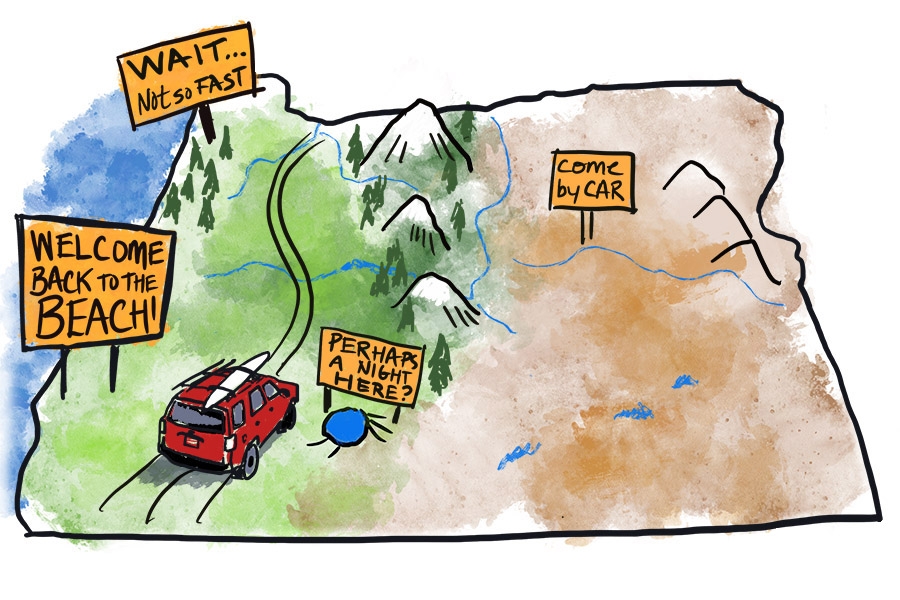Post-pandemic tourism has returned in force in many parts of the state, with tourism in Portland lagging behind, according to data from ORLA and Travel Oregon.
Oregon’s restaurant and hospitality sector shows encouraging signs of growth, but workforce challenges remain a significant issue, according to data from the Oregon Restaurant & Lodging Association.
There are more than 7,000 job openings in Oregon’s hotels and lodging sector and 24,000 job openings in restaurants, with 197,000 currently employed in both sectors, according to ORLA’s data.
“The all-time high points for employment in the industry was August of 2019 when we had 223,795 [filled] jobs. If we could fill all the jobs that are available, then we would be beating the peak industry employment all time,” says ORLA president and CEO Jason Brandt.
The number of restaurants in Oregon has also returned to 2019 levels, ORLA’s numbers show. Brandt says that the state lost approximately 750 restaurant locations out of 10,000 prior to the pandemic, but now the number of restaurants in the state has surpassed 10,000.

Brandt attributes the restaurant and lodging sector’s recovery to increased travel.
“There’s a term out there called ‘revenge travel,’ which I think is is kind of a real thing. That term represents people that feel like they had travel taken away from them, but are now getting their revenge on the pandemic, and getting out there to stay overnight at a lodging establishments and go out to eat,” Brandt says.
A spokesperson for Travel Oregon tells Oregon Business over email that Oregon experienced a 26.5% year-over-year increase in direct travel spending from $10.9 billion to $13.9 billion in 2022.
In recent years businesses have struggled to find employees, especially on the Oregon coast.
Brandt says one of the factors constraining the industry is the perception of poor pay. Data from the federal Bureau of Labor Statistics says food and beverage service workers make a median wage of $12.49 per hour; BLS data say Oregon food service workers make a median wage of $15 per hour, with waiters and waitresses making a median wage of $14.32 per hour. Brandt contends those numbers don’t necessarily reflect what service workers really make because they don’t account for tips; according to data from the National Restaurant Association, tipped workers make a median of $27 per hour.
“This represents a considerable salary that can sustain someone for a lifetime, if it’s a career they truly enjoy,” says Brandt. “One of the things that I don’t feel gets a fair shake in our industry is the wage reporting data that we see often from the US Department of Labor, as well as the Oregon Employment Department. We’ve, talked to our friends at the state agencies about this, and we’re trying to figure out some solutions.”
For kitchen and other back-of-house jobs, Brandt says employers who institute a tip sharing policy could increase equity in the sector, as well as make positions more attractive to job seekers. (BLS data show back-of-house workers like head chefs have a higher median wage than waitstaff: chefs and head cooks make a median wage of $24.03 per hour in Oregon.)
Increases in job demand and tourism spending have not been felt as strongly in Oregon’s largest city. in April of 2023, 167,000 hotel rooms were sold in Portland Central City, 12,000 more than in 2022, but still 22% lower than April of 2019, according to Brandt.
Brandt says media perceptions of Portland as being unsafe are still holding tourists back – a perception he says is not in line with reality, when compared to other cities across the country.
Complete data on summer tourism will be available for ORLA to analyze in the fall. Until then, there is no way to know just how much of a drag so many opens jobs will have on Oregon’s hospitality sector. But even with so many open positions, Brandt says Oregon’s hospitality industry is on the right trajectory, and that he expects the sector to break even more records as time goes on.
“My advice would be to not underestimate the ability of the hospitality industry to break more records relating to demand over the next decade. And as people experience the amazing typography we have here and the different climates and cultures, I think our industry will be well served for future growth and opportunity,” says Brandt. “The future is very bright for our industry.”
To subscribe to Oregon Business, click here.





